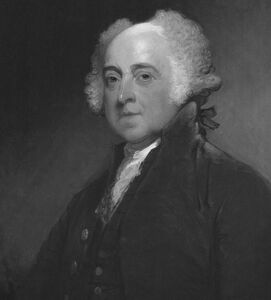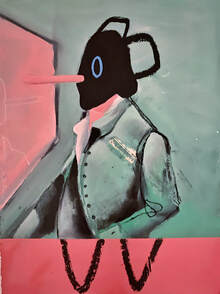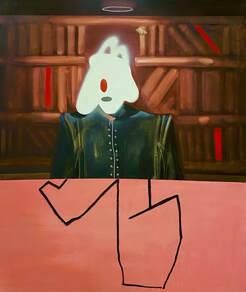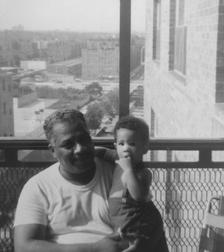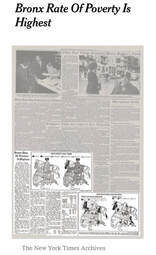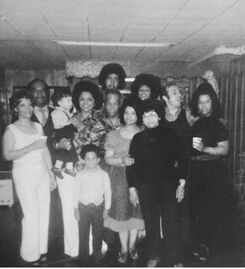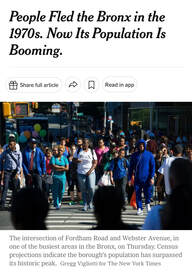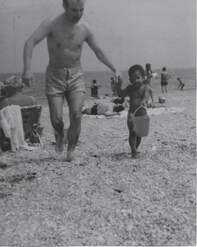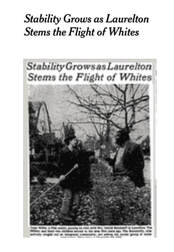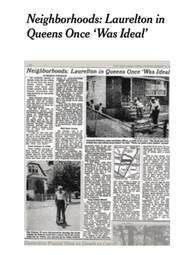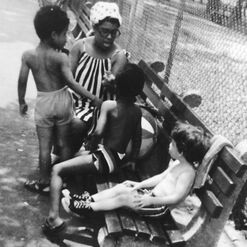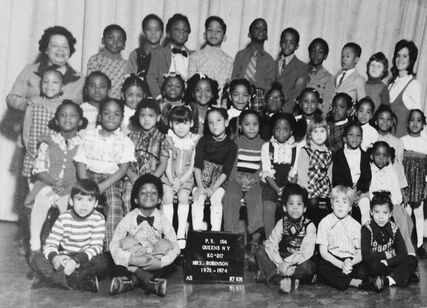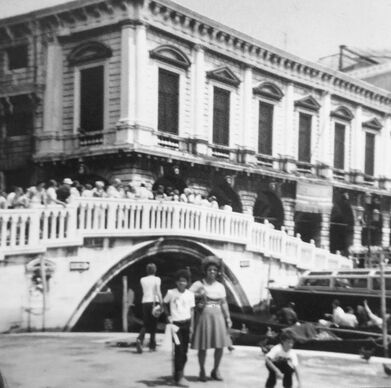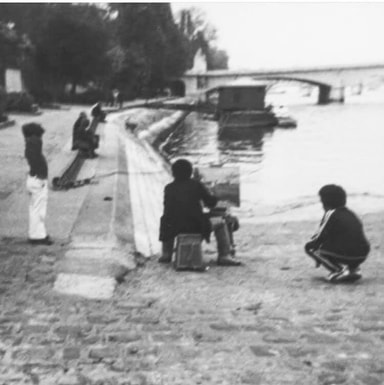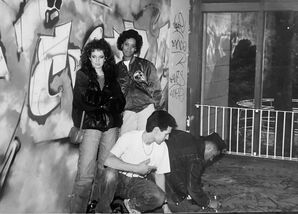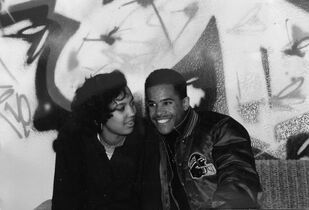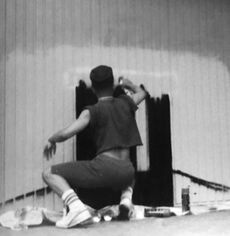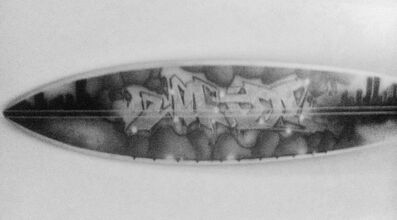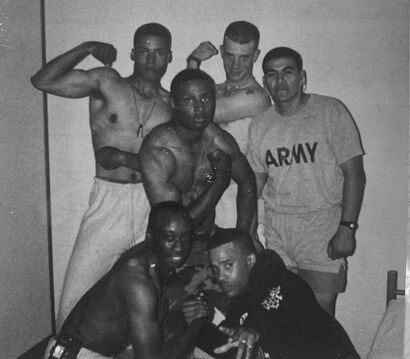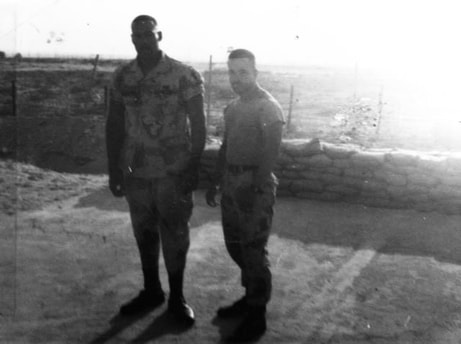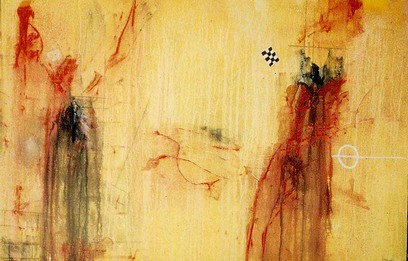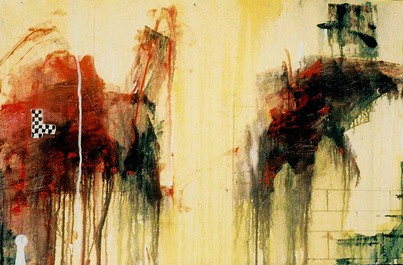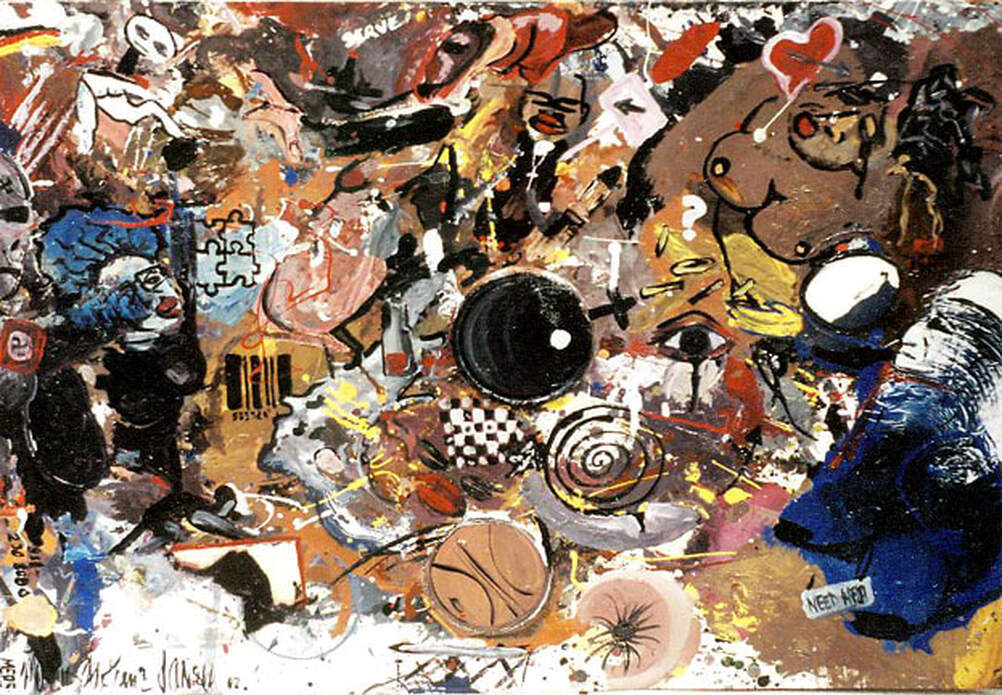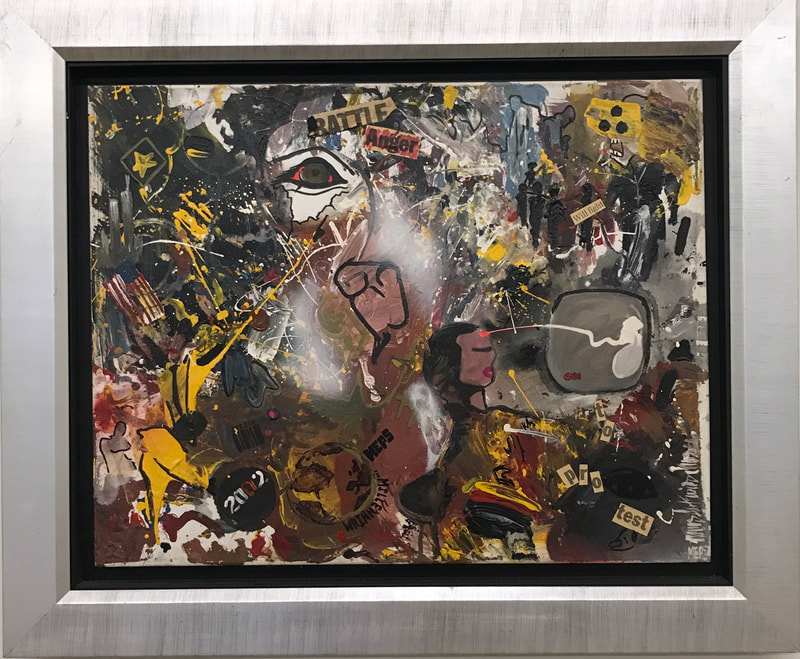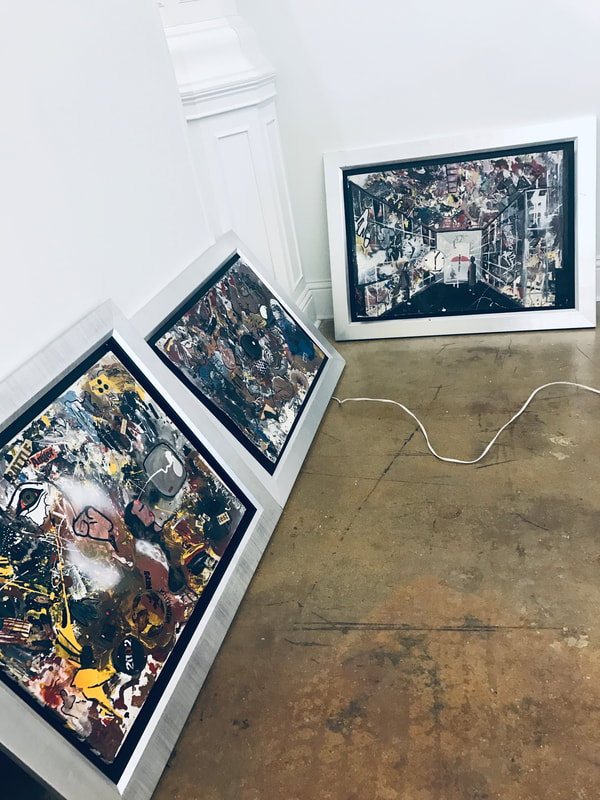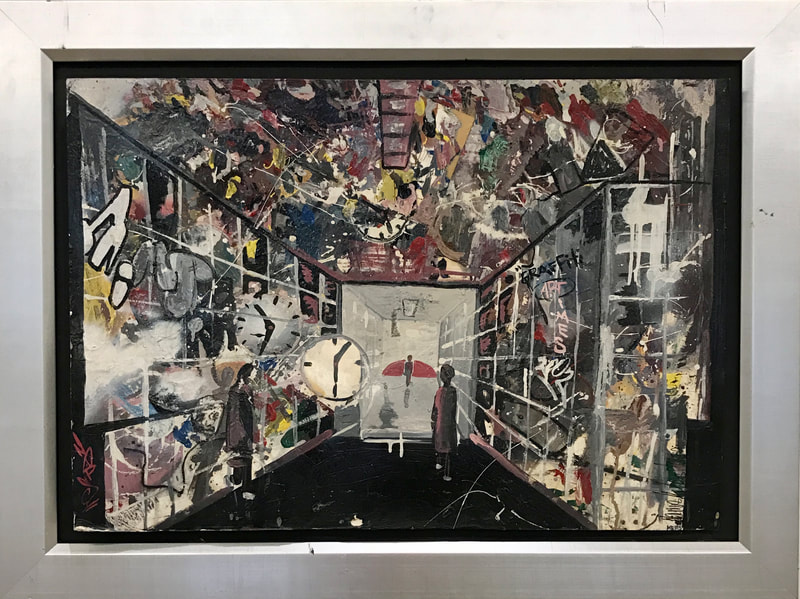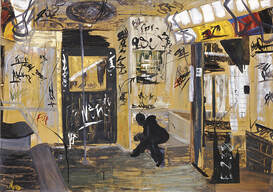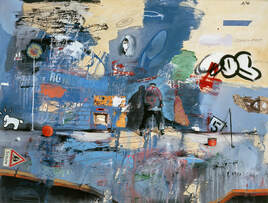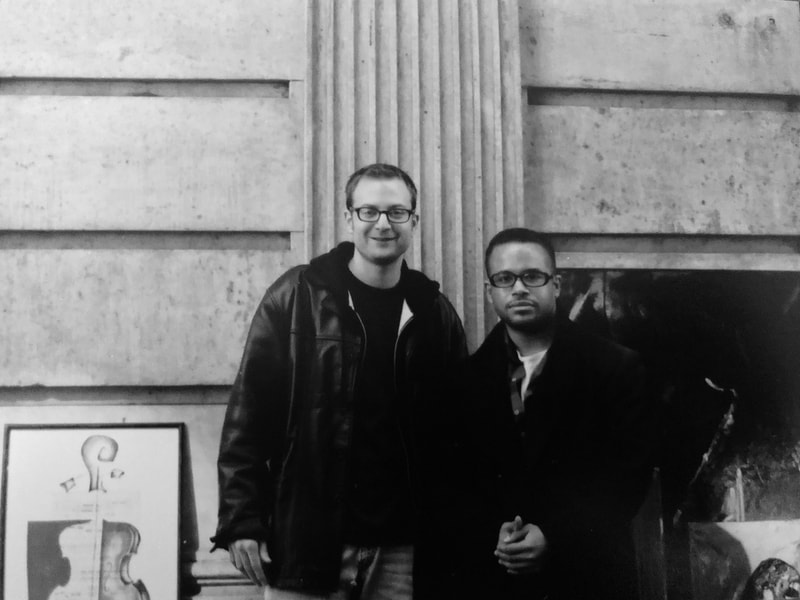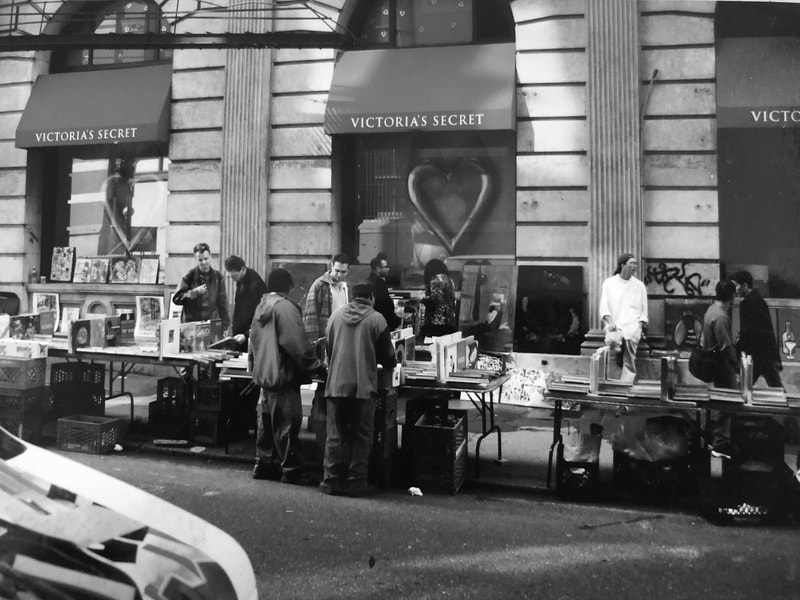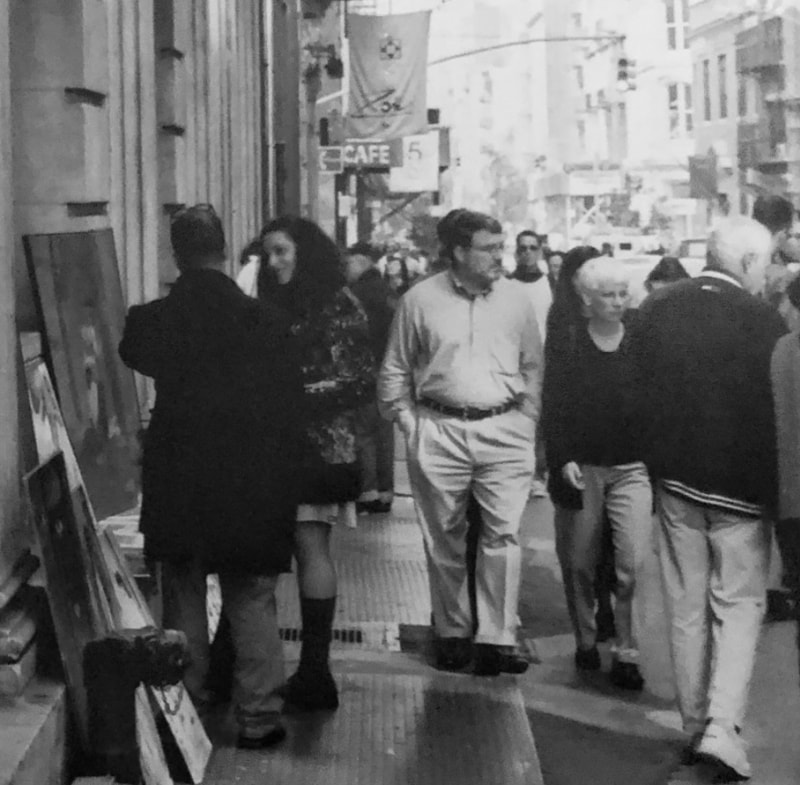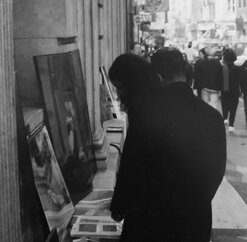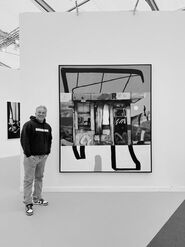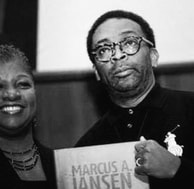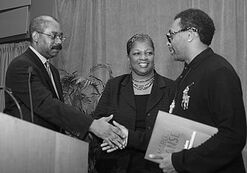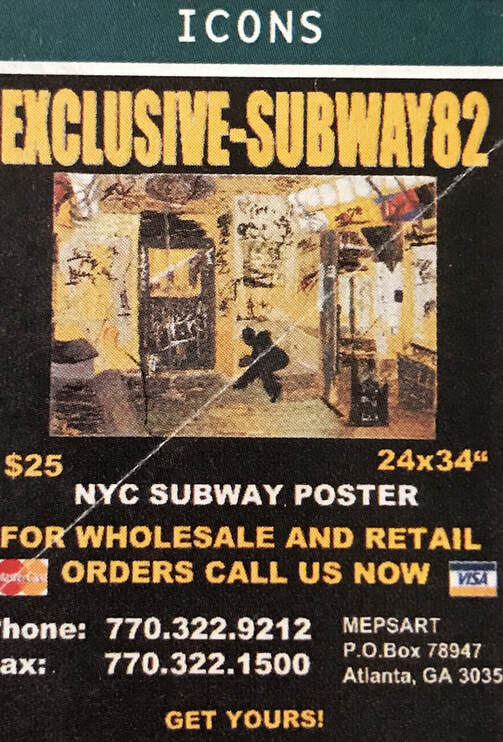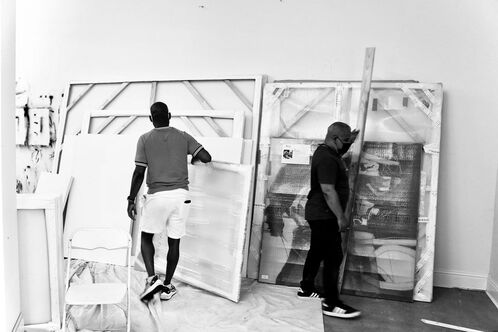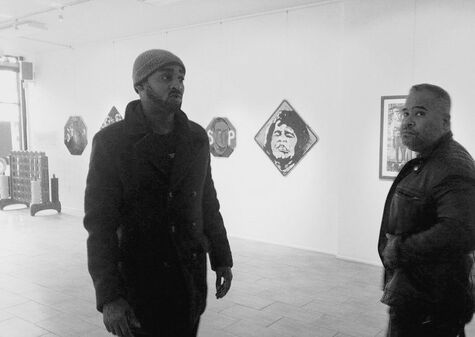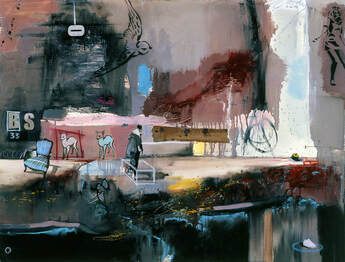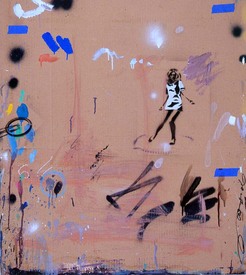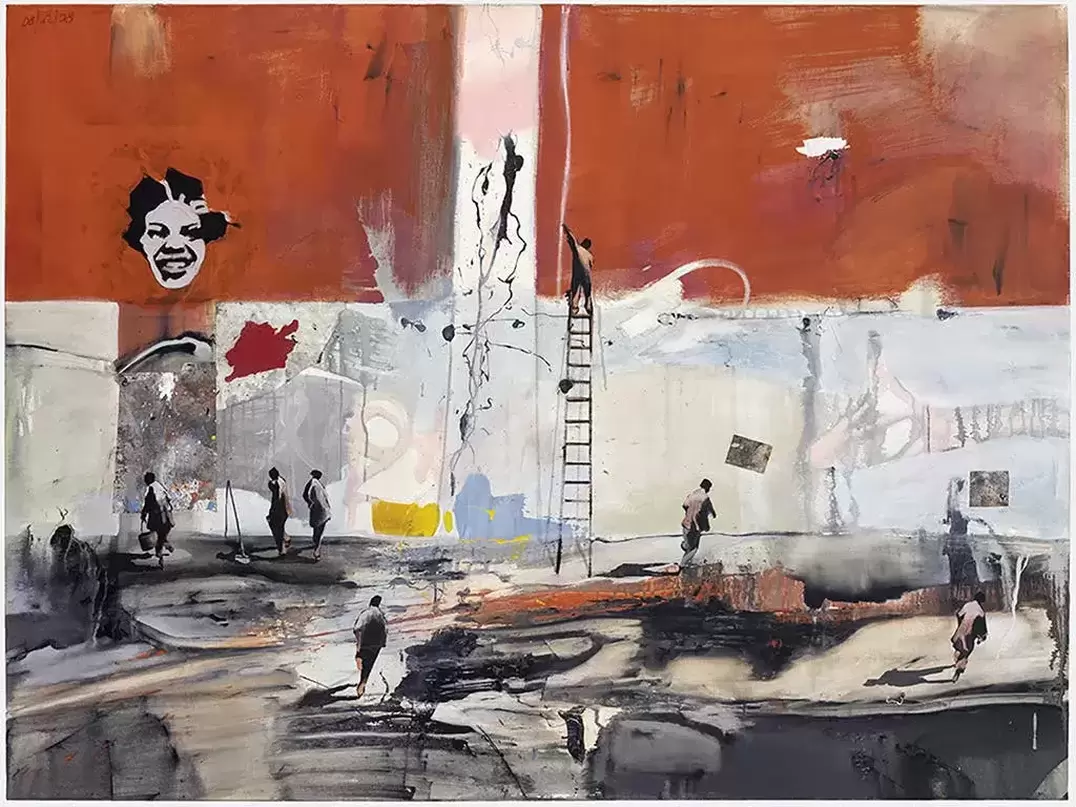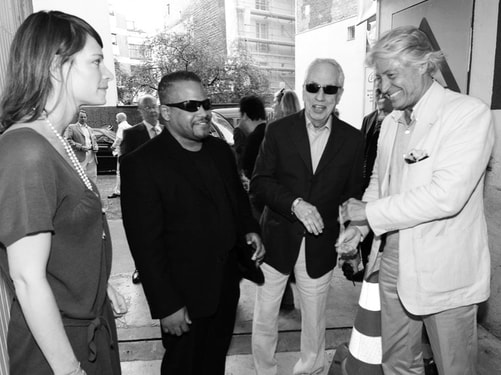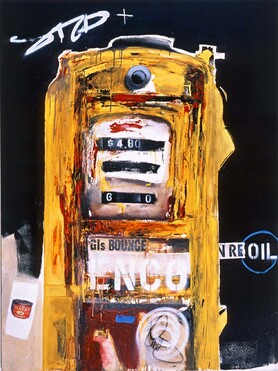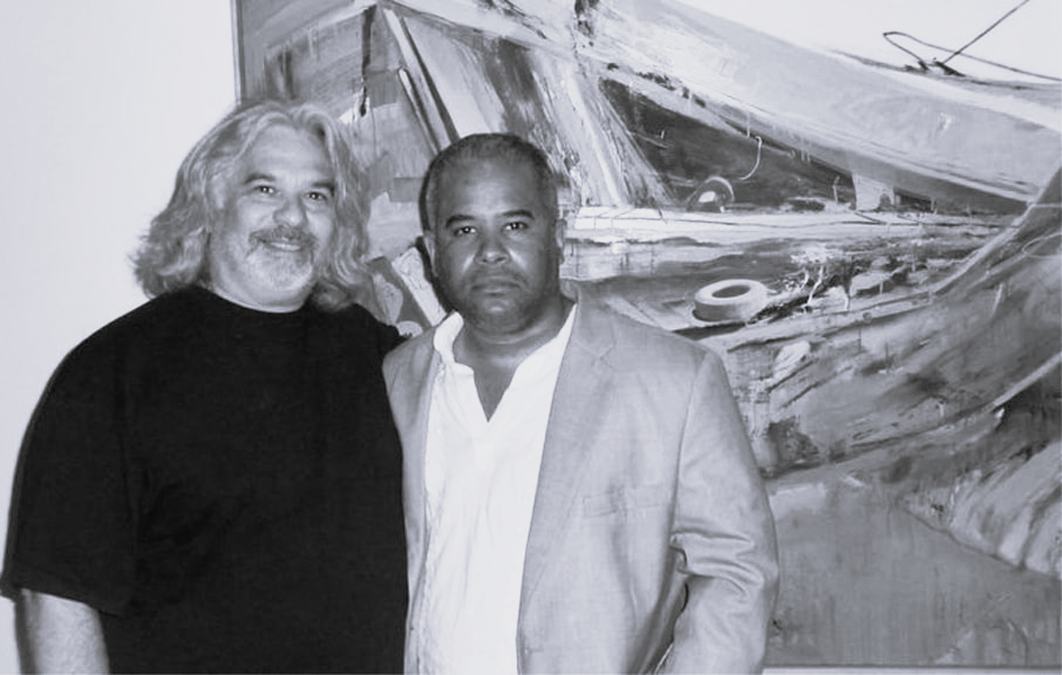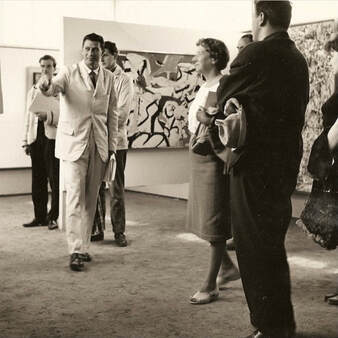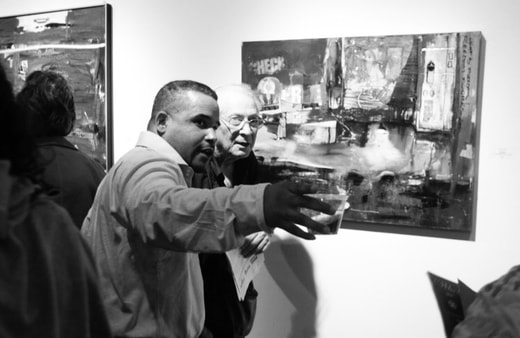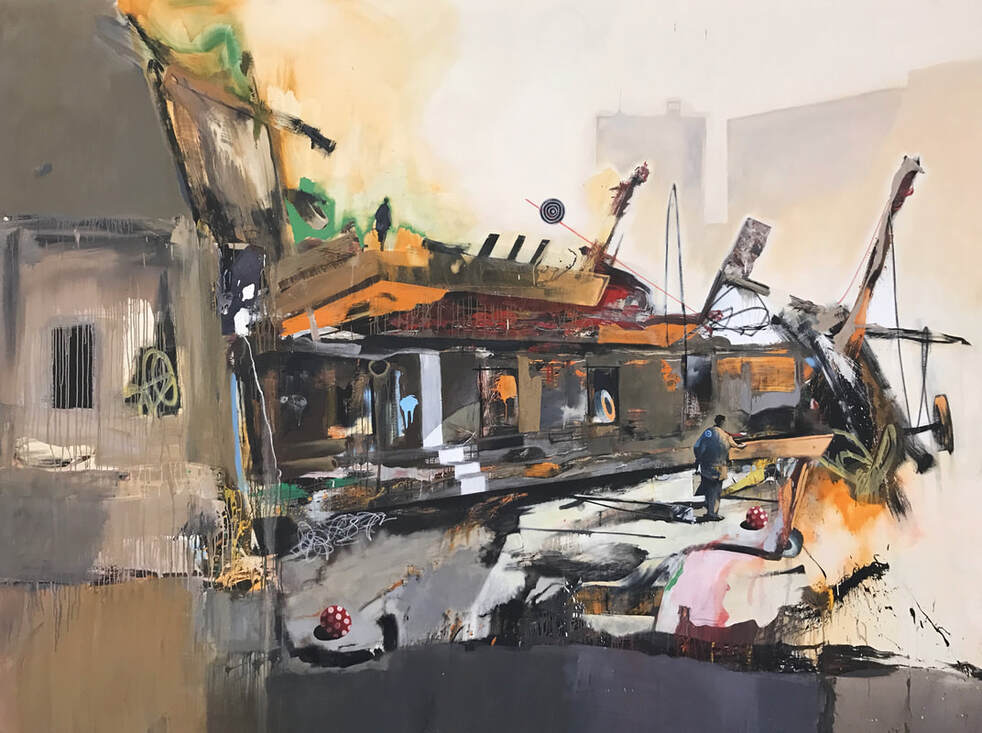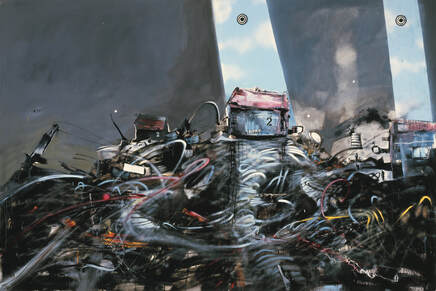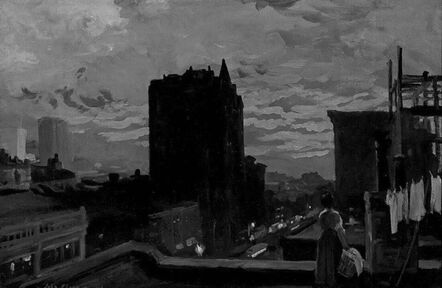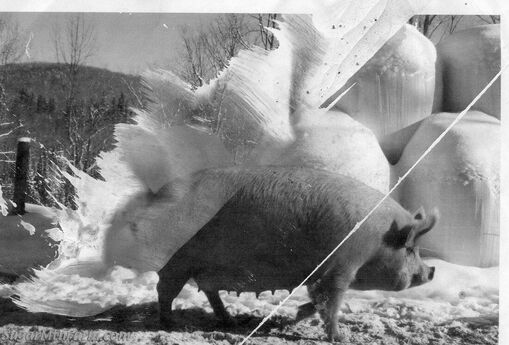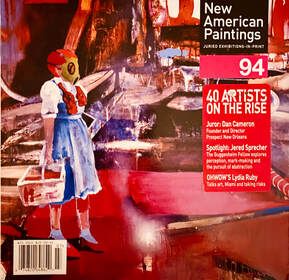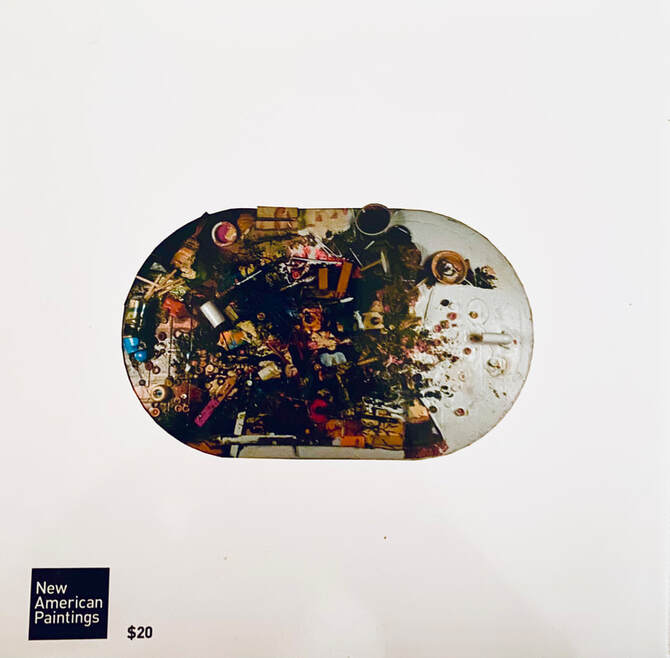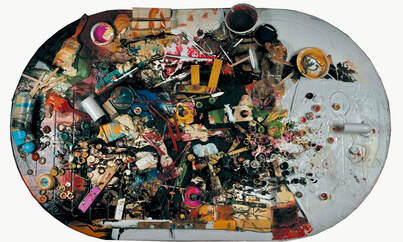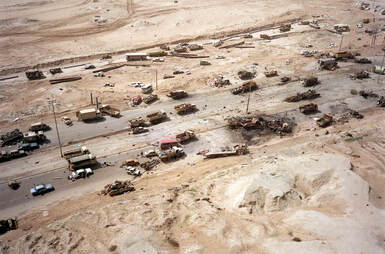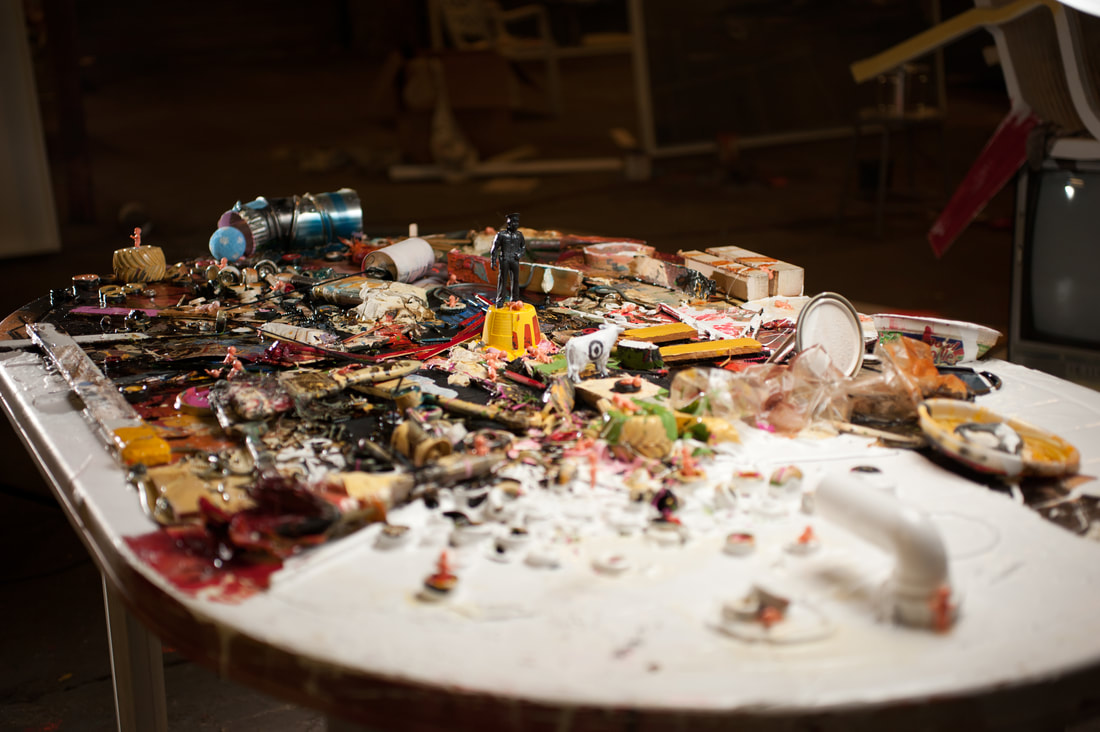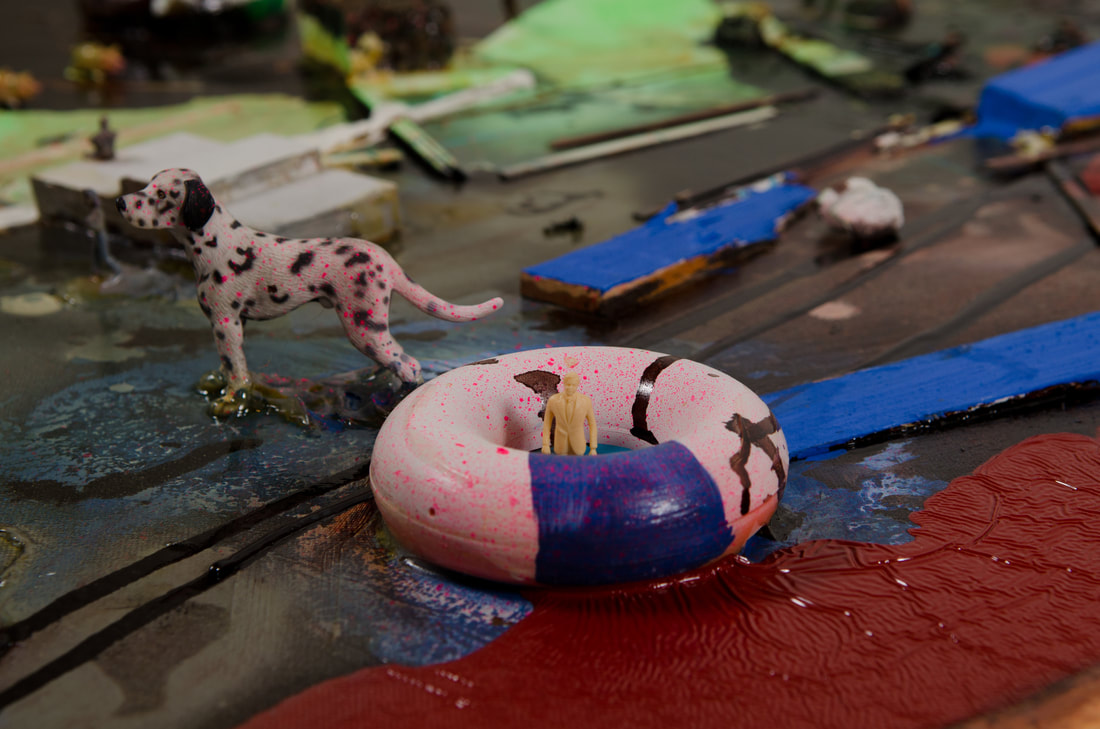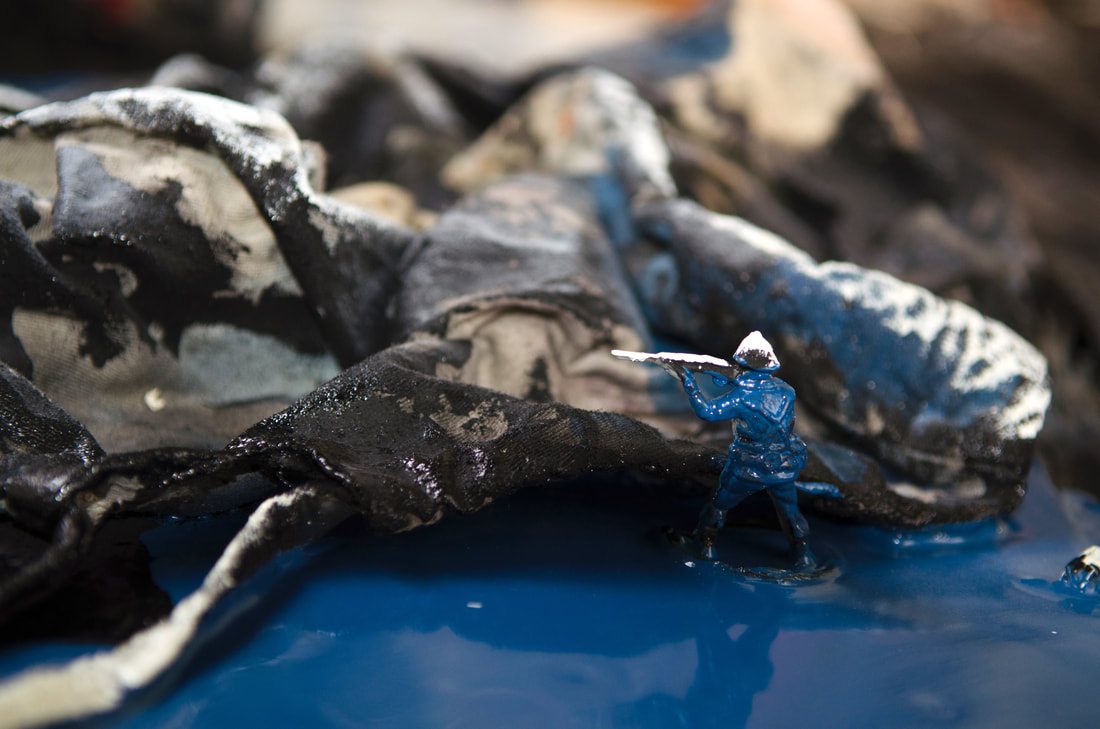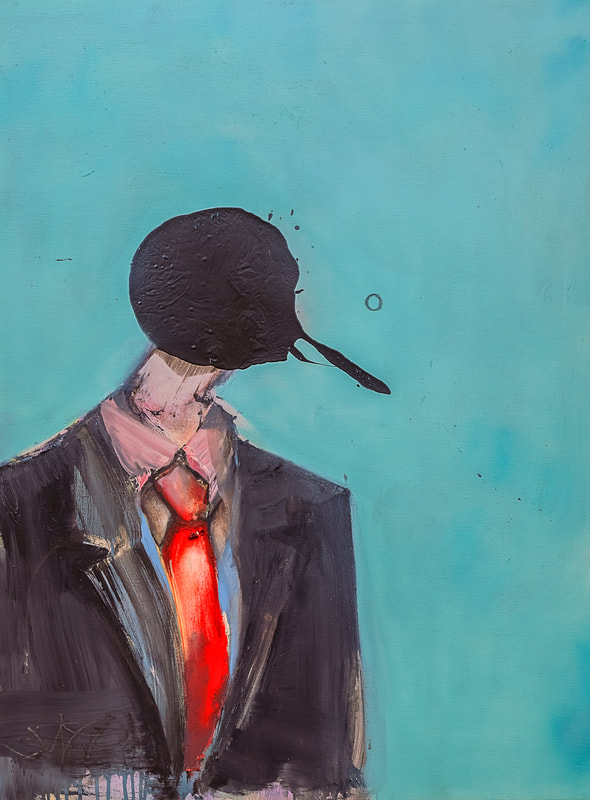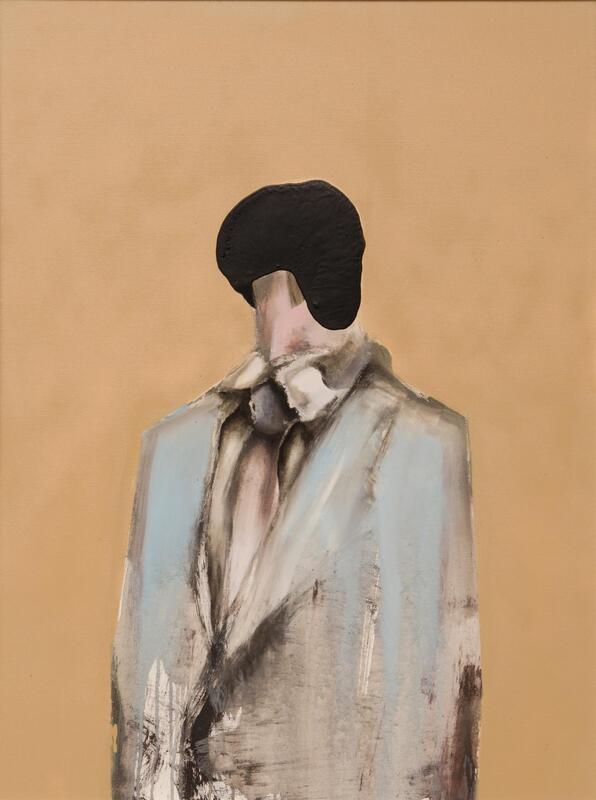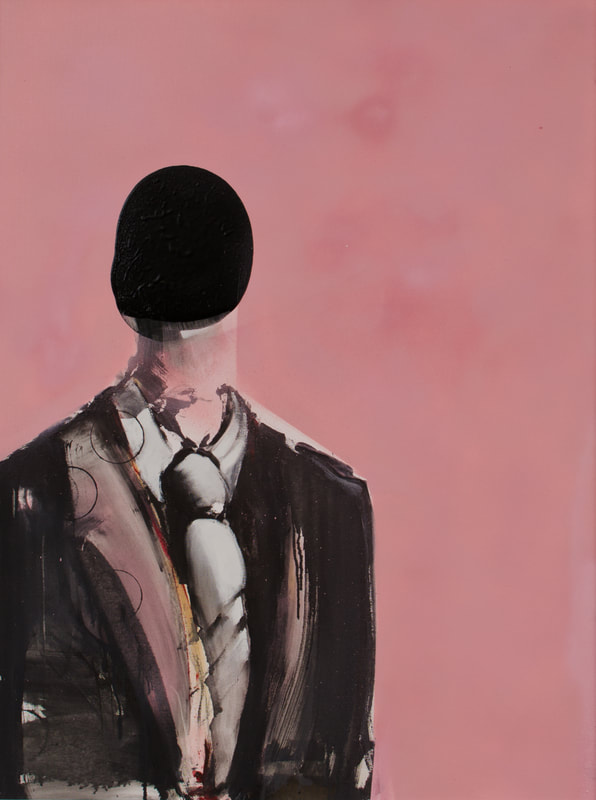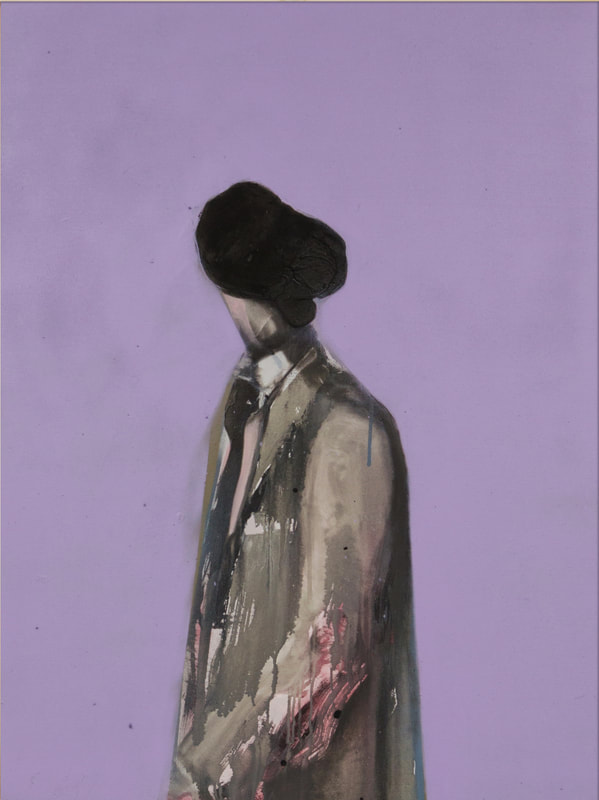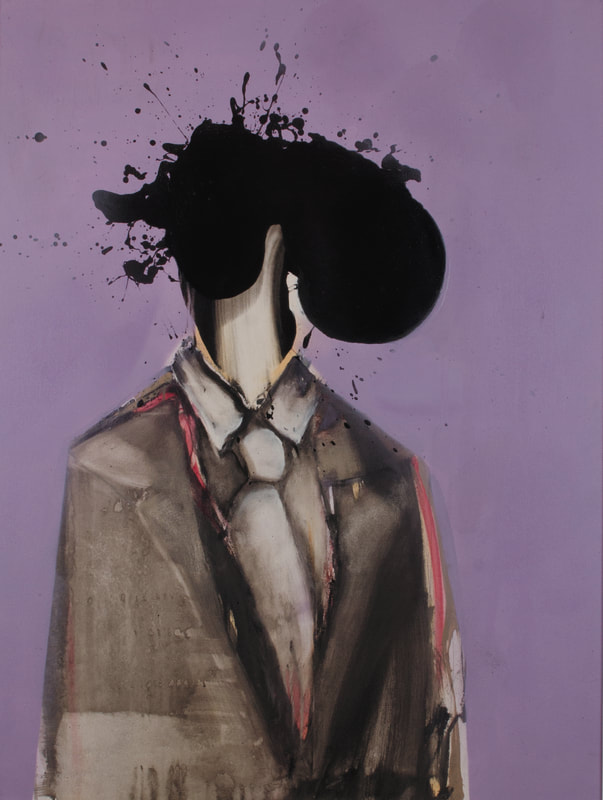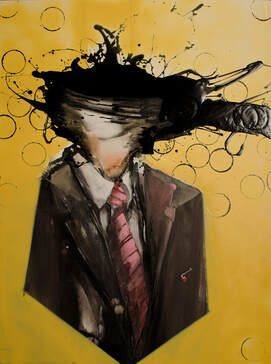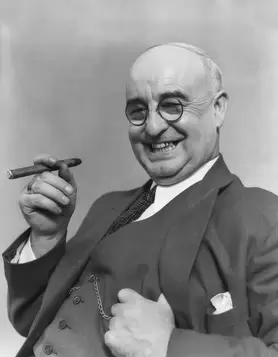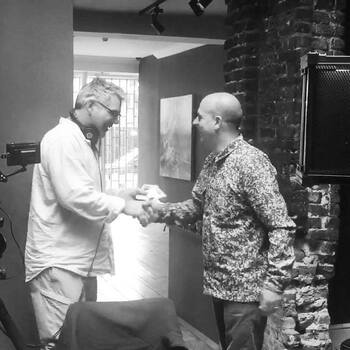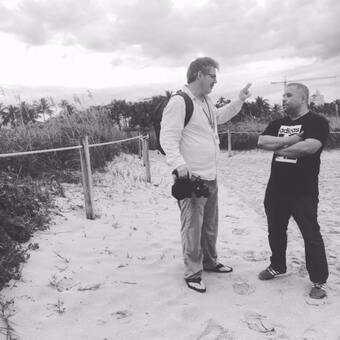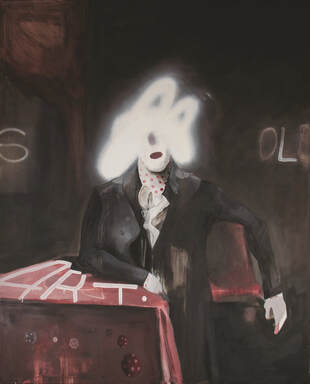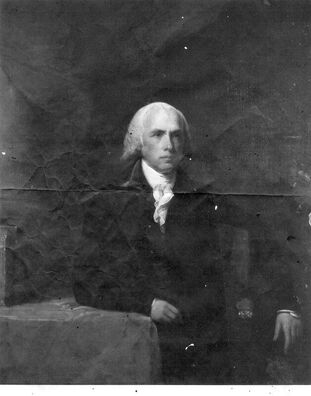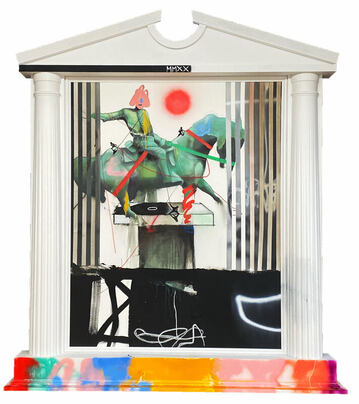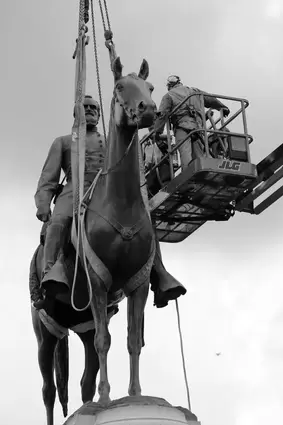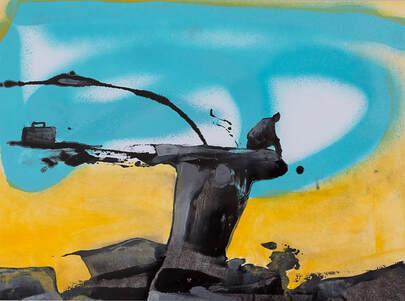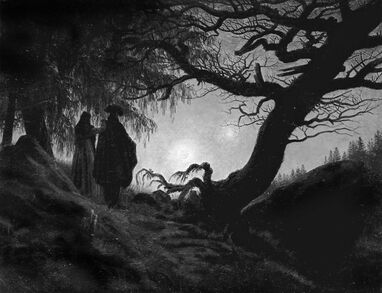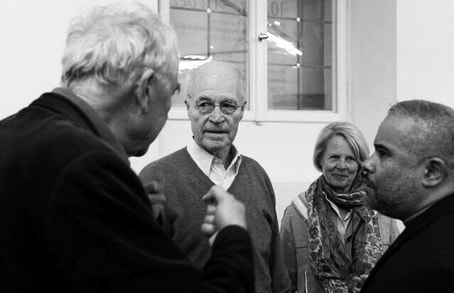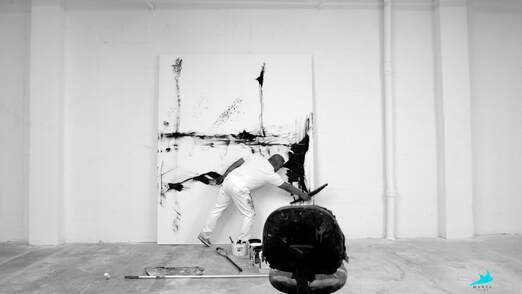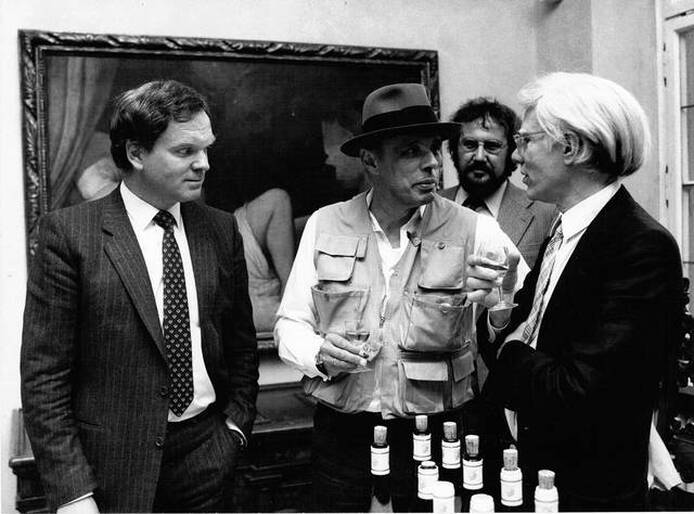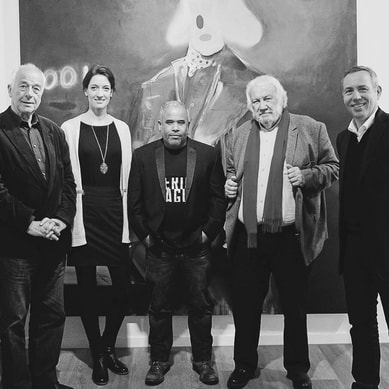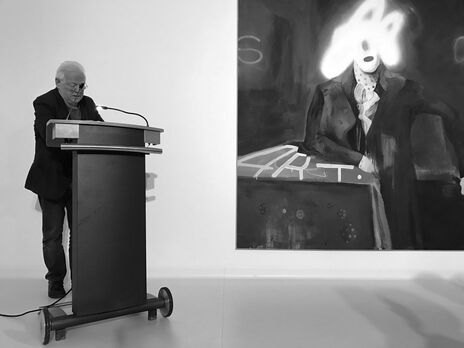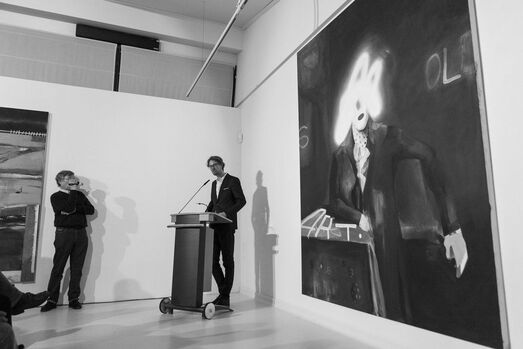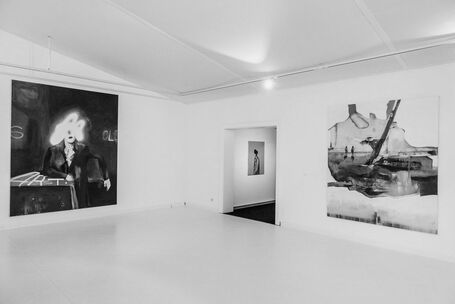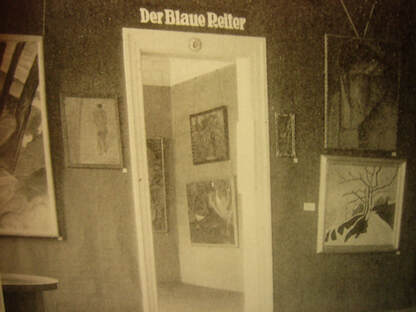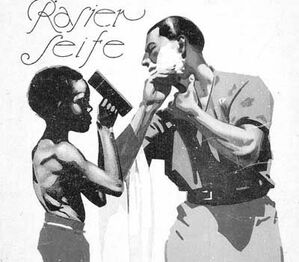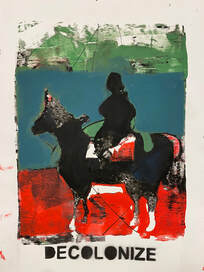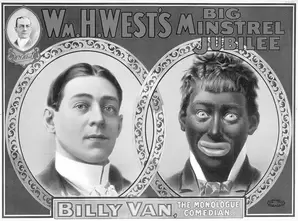|
“The American myth needs to be reexamined in the twenty-first century, even rewritten. One of the most important contributions in this regard is being produced by the American Marcus Jansen. With Caribbean and German roots, he is a painter through and through, a painting diagnostician with a gaze as comprehensive as it is incisive. He radically disposes of the early American myth of undeviating progress. His results are disconcerting, and they can be frightening.” - Prof Dr. Manfred Schneckenburger, Art Critic/ Art Historian and Documenta Kassel, Curator 1977 and 1987 as well as former director of the Kunsthalle Koln and Professor and reactor at the Kunstakademie Muenster. Marcus Jansen participated in his first international Biennale in 2007, at the 12th International Print and Drawing Biennale, in Taiwan at The National Taiwan Museum of Fine Art, curated by David Kiehl from the Whitney Museum of Art. In 2016, His first European solo museum exhibitions were held at the La Triennale di Milano Museum, in Milan, Italy, curated by Brooke Lynn Mcgowen Ph.D., and Rosella Faranotti, as a part of a traveling European museum tour, followed by two solo Museum exhibitions in Germany at the Kallmann Museum in Ismaning, Munich, and the Zitadelle Museum, in Spandau, Berlin, curated by Dr. Elmar Zorn, where his three-decade career was celebrated with an in-depth survey. Following his European museum introduction in 2016, his first U.S., Museum debut was a spotlight at The Kemper Museum of Contemporary Art in 2018 with his show titled Deconstructing Marcus Jansen, curated by Jade Powell that investigated his stylistic techniques and placed him in dialogue with Robert Rauschenberg, William de Kooning, Roy Lichtenstein, James Rosenquist, David Smith, John Steuart Curry, Jim Dine and Romare Bearden. The Rollins Museum of Art, curated by Dr. Gisela Carbonell in Winter Park, Florida became Jansen’s first solo museum show in the United States, followed by The Baker Museum Artis-Naples, in Naples, Florida with his show titled Marcus Jansen Two Decades of Relevance, curated by Courtney McNeil and Rangsook Yoon. EARLY LIFE Footage shot in 2022 by Arian Antonucci
Barbara Pamela Joe Yen, Jansen's Aunt who raised Jansen and who he lived with in the Bronx at his early part of his career while commenting on his selling on street corners in Soho in 1999 and his first painting painted that was exhibited at the Lever House in Manhattan at age six. 1968-1976
1976-1979
ADOLESCENCE 1980-1985
MILITARY 1986-1988
1989-1996
Departure from Graffiti lettering to Gestural figuration in abstract paintings 1996
ART CAREER Black hole on carboard 2000
Similar works to those sold on Prince street and Broadway in New York in 1999
1997-2003
|
|
|
The Source Magazine add in 2001 one week before September 11th.
|
“The painter manages to combine the gestural and coloristic freedoms of abstract painting with the literal eloquence and crafts manly precision of naturalistic depictions. Indeed, thanks to the contrapuntal juxtaposition of these two opposing artistic principles, the effects of both the abstract and the objective elements are considerably.”
-Prof Dr. Gottfried Knapp Senior Art Critic at Suddeutsche Zeitung 2017.
-Prof Dr. Gottfried Knapp Senior Art Critic at Suddeutsche Zeitung 2017.
Streets, 30x40" on canvas, 2008
Permanent Collection at Kemper Museum of Contemporary Art
"Jansen’s mixed-media work such as Streets (2008) was inspired by Romare Bearden and Robert Rauschenberg’s use of collage and found objects. The nearly monochromatic scene in Empty Plates (2007) parallels photographs by Robert Farber with its use of gradient color, while details found in the corner of the painting pay homage to Abstract Expressionists like Willem de Kooning—another of Jansen’s inspirations. In both Streets and Empty Plates, Jansen employs a central line to divide the composition, a technique also seen in John Steuart Curry’s Fire Diver (1934). By including Jansen’s artistic influences and contemporaries, this exhibition highlights the visual, technical, and thematic correlations among them."
- Kemper Museum of Contemporary Art
"In the late 1940s, Abstract Expressionism developed as an aesthetically pure style, stripped of the political content of 1930s Depression-era art, memorably dismissed by Arshile Gorky as “Poor art for poor people.” That attitude persisted until a counter-reaction set in a generation later, launching conceptual and postmodern art, informed by a progressive, critical viewpoint. Those of us who agreed with the politics also, unfortunately, had to concede that decoding the sometimes convoluted intellectual puzzles was like taking medicine, and not user-friendly enough for the “masses.”
Combining sociopolitical content with visual pizazz, however, can be done. John Heartfield’s anti-Nazi photomontages; Anselm Kiefer’s mythic war-torn landscapes; the anti-imperialist paintings of Manuel Ocampo; Käthe Kollwitz’s powerful prints about class oppression and struggle; and Sue Coe’s scathing eviscerations of the industrial slaughter of animals are all passionate and compassionate. Marcus Jansen belongs to this humane, humanist tradition."
- Artillery Magazine 2017
Combining sociopolitical content with visual pizazz, however, can be done. John Heartfield’s anti-Nazi photomontages; Anselm Kiefer’s mythic war-torn landscapes; the anti-imperialist paintings of Manuel Ocampo; Käthe Kollwitz’s powerful prints about class oppression and struggle; and Sue Coe’s scathing eviscerations of the industrial slaughter of animals are all passionate and compassionate. Marcus Jansen belongs to this humane, humanist tradition."
- Artillery Magazine 2017
Digital Artist, Laurence Gartel wit Marcus Jansen, 2010, 101 Exhibit, Miami
2004-2009
2004-2009
- Jansen had the opportunity to show with his much-admired artist Robert Rauschenberg in support of a local Arts for Act charity at the Bob Rauschenberg Gallery in 2004 almost immediately after arriving in Florida, and was introduced to him personally by Grammy-winning musician Kat Epple after Rauschenberg viewed Jansen’s painting and complimented his work at a group show at the Bob Rauschenberg Gallery.
- He also meets Father of Digital Art, Laurence Gartel who mentors Jansen for his first catalog. (See above photo), Infront of Jansens painting, "Search and Rescue."
- The same year, Jansen meets art historian and curator Jerome A. Donson. The former director of the famous American Vanguard Exhibitions 1961 that traveled to Europe and included Rauschenberg, Franz Kline, Jackson Pollock, Willem de Kooning, and others, discovered Jansen's work after seeing it in a gallery show window that drew him and his wife Naomi in.
- Donson wrote about the artist's work in Jansen's first French catalog, "Modern Urban-Expressionism, The Art of Marcus Antonius Jansen," in which he called Jansen the “innovator of Modern Expressionism” and compared it with the Ash Can School.
"Marcus is the innovator of Modern Expressionism. What initiated it for him, was the graffiti on the sides of subway trains when he traveled from the Bronx to Manhattan to sell his work on the street. This is somewhat reminiscent of Jackson Pollock learning to kneel with the Hopi Indians and throw sand to make sand pictures. That innovation may have been the beginning of Abstract Expressionism." As we spoke to the artist, Marcus Antonius Jansen, I told him I believed he was the originator of a new movement which I called “Urban Expressionism” and that I believed that there will be many followers in this new style. But there will only be one Marcus Jansen."
- Jerome A.Donson curator of Vanguard American Painting, 1961
Published: Modern Urban Expressionism the Art of Marcus Antonius Jansen
- Jerome A.Donson curator of Vanguard American Painting, 1961
Published: Modern Urban Expressionism the Art of Marcus Antonius Jansen
- Jansen is invited to participate in the Tampa Museum of Art, "Under/Current/ Overview 8," for the first time in a museum survey exhibition in the United States.
- Founder, Crosby Kemper from the Kemper Museum of Contemporary Art added two works to its collection in 2006. These become Jansen’s first works purchased for a U.S. Museum. The next year Jansen participated in the 8th International Biennale in Russia and had his work “The Swallows Symbol” placed into his first international Museum the Moscow Museum of Modern Art permanent collection.
- Jansen’s second son is born and shortly after again was commissioned this time for a politically critical satire as part of the Warner Brothers 70th anniversary of the Wizard of Oz. He was selected for the 12th International Print & Drawing Biennial in Taiwan with juror David Kiehl, from the Whitney Museum of Art, shortly thereafter, as one of only nine other Americans in 2007.
|
Marcus Jansen at his first large Studio working often in up to 110 degrees, working on a large works, titled Controlled Chaos, 2010
|
Marcus Jansen commentary in studio 2012
|
Controlled Chaos, 108x88" on canvas, 2010
- Jansen began painting large-scale works in the post/911 era and was mostly alarmed by the emerging surveillance state in 2008 and 2009 and corporate power structures through later distorted faceless portraits.
- His wife Michaela Jansen is diagnosed with cancer and her last film footage after a two-year battle was shot in 2010 for a documentary titled A Painter Allegory.
- He addressed human concerns during this period through politics, social issues, the patenting of pigs' DNA after his son's diagnosis with autism, and in 2009, his wife’s diagnosis with cancer and had a painting included in the New Britain Museum of American Art permanent collection.
|
Michaela Jansen, (1973-2011) R.I.P.
2010 commentary three months before her death in the film A Painters Allegory in front of the painting: Monocultural Farms, 108x72" 2010 |
201, behind the scenes footage with Michaela Jansen and Jansen boys before filming in Marcus Jansen studios with Producer, Eric Raddatz and Videographer Flip Minott
Painting: Monocultural Farms, 108x72" 2010 |
SCIENCE AND FOOD
|
|
|
During Art Basel Miami Beach, 2010 - Commentary by Gallery Director Adam Wolfson
|
Marcus Jansen on the front cover of New American Paintings, No. 94 in 2011
|
AERIAL VIEWS 3D PAINTINGS
2010-2015
2010-2015
- Jansen was commissioned by Absolut Vodka, becoming part of the next generation in the tradition of popular of Absolut artists following in the footsteps of Andy Warhol, Damien Hirst, and Keith Haring. Chief Curator at the Orange County Museum of Art Dan Cameron selects “Creeping Obstacles In Kansas” for the cover of New American Paintings Volume 94.
- In 2011, the same year, Jansen’s wife and longtime supporter died at age 36 after a two-year struggle with cancer, leaving Jansen with two sons to raise on his own. Emotionally and financially bereft, he restarted his art career from scratch after losing almost everything he had due to endless medical bills after the death of his wife. He begins painting faceless men in suites exploring anonymity and power.
- He shows at the Sidney and Berne Davis Art Center, in Fort Myers immediately after his wife's passing in 2011, with a groundbreaking opening, titled "A Painters Allegory," drawing thousands of visitors being the largest attended art show at the Center to date.
- The Naples Museum of Art included Jansen in its annual exhibition (Florida Contemporary) in 2014.
- Instead of retreating, he expands opens a large public studio space in what used to be a segregated area in Fort Myers Florida the residence of Robert Rauschenberg, Lichtenstein, and artist Darryl Pottorf that permanently changed the local art scene and brought in clients from all the world and the local community together on Martin Luther King Blvd.
- He began departing from two-dimensional landscapes and moved to three-dimensional tabletops that he calls "Aerial Views" in 2011. The Aerial Views added sculptural elements to Painting made from unused tabletops emerging from used mixing color pallets into three-dimensional, aerial painted landscape works.
|
Departure to his "Aerial views" series in 2011, seeing landscapes 3D from an aerial view as he witnessed form his Gul War tour in a Helicopter ride in 1991. (The Overseer) on table top, 2011
|
Highway of Death result of American Bombing, Iraq 1991
|
Departure to his "Aerial views" series in 2011, seeing landscapes 3D from an aerial view as he witnessed form his Gul War tour in a Helicopter ride in 1991. (The Overseer) on table top, 2011
|
- He also creates a critical series of anonymous men in suit portraits who’s faces are distorted. He continued to play with disruptive realism in his works while exploring anonymity and power in these new figures. His first “Faceless” series emerged in 2011 and was released in 2012.
2011
FACELESS PORTRAITS
Jansen departs from his landscapes and investigates structures of power and anonymity thorough faceless men in suites in 2011.
Faceless #1, 2012.
Permanent Collection: Permm Museum of Contemporary Art, Russia
Faceless #1, 2012.
Permanent Collection: Permm Museum of Contemporary Art, Russia
- In 2013, Jansen was named a winner of the Arte Laguna Biennale Prize, in Venice, curated by Sabine Schaschl, (Director and Curator of Kunsthaus Basel, Switzerland) where he was asked to stage a solo exhibition in Italy for the first time. The show was publicized by Rolling Stone, Arte, XL Repubblica, and ESPOARTE
- Jansen had his first solo show in New York City at the Castle Fitz John’s gallery in the Lower East Side organized by his longtime Brooklyn dealer Richard Beavers. The show “Future Grounds” gains national press art world attention.
- Street arts leading art authority, Steve Lazarides, invited Jansen to show in London at Lazarides Gallery in 2014 displaying his "Arial Views" for the first time internationally. The show becomes a career changer for Jansen’s international exposure and Jansen is called “A Cartographer of Conflict” in his review by the London press. Steve later also appears in Jansen’s art film documentary Examine and Report and writes the foreword to Jansen’s first Monograph in 2016, Marcus Jansen DECADE.
- Jansen was later included in various important group exhibitions curated by Lazarides that highlight the gallery's roster of artists.
We Must Talk about Race and American ColonialismHayida Sewer is a Ph.D. student in the Africana Studies Department at Brown University.
- In 2015, Jansen diverts from his men in suites portraits to critically depicting historic colonialist figures and re-examines history in more contemporary terms through his lens of distortion and often mocking previously hailed elite figures and colonialism and the merciless capitalistic foundation it brought along on the backs of people of color at large. Jansen draws from his own personal experiences in his childhood and adolescence trying to integrate into a European culture as the only child of color. as well as a University Thesis by his father in History titled: The War of Independence or the American Revolution that was no revolution: Another look at the reasons
- Sabrina Gruber, a musician and pianist, became Jansen's partner and primary photographer of the artist in his studios. Her most recognizable photos appeared in the Skira Editore book Marcus Jansen DECADE. Jansen’s London dealer Steve Lazarides, BANKSY’s first agent, invited Jansen for his first solo show titled, "Whistleblower" at the Lazarides Gallery and became Jansen’s UK representative which helped catapult his career.
By NOAH BECKER, APR 2016
Marcus Jansen’s intense colors, combative textures and calligraphic marks draw us into his enigmatic paintings. Jansen shows his large-scale works at international galleries and museums with regular frequency. His presence in museums is due to his style being a careful balance between modernism and historical painting.
Jansen’s color sense is a major aspect of this — a combination of bright arbitrary fauvist color in contrast to naturalistic color, all within the same work. This approach can be traced back and found in the work of certain 19th century artists. His compositions are modernist and historical in the sense that they break up the canvas into areas of color but also function as representational space.
Jansen has stated on numerous occasions that he is completely obsessed with painting and highly driven to constantly produce new work. It’s an obsession and a search you could compare to someone like John Coltrane’s musical output — a non-stop ever-searching work ethic in paint. Jansen like the great jazz saxophonist and all highly productive people, goes at his work with complete seriousness, striving for maximum intensity in his art. He relies on chance and the physical act of painting to bring forth surprising results.
Like jazz improvisation there is a format to work within when painting and certain pre-conceived devices to utilize during the process of making a work of art. Through his razor sharp awareness of the moment and a willingness to embrace the accidental rhythm of creative discovery, Jansen finds new forms and new ways of expressing hidden meaning in art.
- Whitehot Magazine, New York, NY
In 2018, Jansen created new gestural landscapes blending realism with abstraction, crossing real and fiction on paper in a gestural way that were first published in the Hirmer Verlag Publication AFTERMATH in Munich, Germany. Medium: Spray Paint and Oil enamel.
MUSEUM SOLO TOUR
Marcus Jansen DECADE, La Triennale Di Milano, Museum, Italy 2016
2016-2018
- Jansen’s father and mentor Hans Jansen, perhaps his strongest academic influence, died four months before Jansen’s first solo museum exhibition in Europe at La Triennale di Milano Museum. The exhibition, “DECADE—paintings from the Last Ten Years,” dominated Italian headlines, and critics picked it as one of the top 10 shows to see in Italy next to Basquiat, Monet, and others. Jansen was in part documented in film by Italian Filmmaker Tiziano Rossi titled Portrait in Steps.
- A headline in EXPOART magazine read, “A New Star is born?” In a review by Italian art critic Igor Zanti. The exhibition is inaugurated by art historian Dr. Elmar Zorn and curated by Dr. Brooke Lynn McGowan and RossellaFarinotti.
- Jansen's book Marcus Jansen DECADE is published by Skira Editore, in Milan. The 10-year survey of works is released worldwide includes Jansen’s “Aerial View” series being published, and the first international film is produced by Emmy-winning filmmaker and director John Scoular, who presented Jansen as the subject of the film Examine and Report, to be later shown at a Word Premiere at the Fort Myers Film Festival, winning the title of Best Local Film and East Hampton’s Film Festival where it wins Best short documentary film.
- It highlights the influences that made Jansen's work what it is today; featuring art dealer Steve Lazarides, Robert Rauschenberg's art fabricator Lawrence Voytek, art historian Dr. Brooke Lynn Mcgowan, and major Jansen collector Dieter Rampl, chairman of the Hypo-KunsthalleMunich, Noah Becker, founder of Whitehot magazine, NY, WEST Rubenstein, and others.
- In 2017, New York based curator Brooke Lynn Mcgowan, Ph.D, organizes Jansen's first major survey in California at San Franciscos Weisenstein Gallery, tilted, Obscure Lines between Fact and fiction." The show is highlighted by writer Dewitt Cheng in Artillery Magazine.
"It is with great sadness that we have learned of the death of Prof. Dr. Manfred Schneckenburger, who gave important impulses to world art exhibition documenta in Kassel with twice being involved. documenta 6 (1977)."
- A first European solo museum tour was organized by Art Historian Prof Dr. Elmar Zorn from Munich and began in conjunction with the Milan, Italy show at the La Triennale di Milano, Italy curated by Brooke Lynn Mcgowan, NY, and Rosella Faranotti, Milan, in September 2016,. It had six showings in Europe proceeding to ‘Kunst & Kultur zu Hohenaschau e.-V.“, to The Kallmann Museum, Ismanning, the Heitsch Gallery, Munich, the Traunstein Kirche in Traunstein, Germany to the Zitadelle Museum, Spandau, Berlin, Germany, and later to Galerie AMART, Vienna with a final showing in May 2019.
- German art book publisher Hirmer Verlag Munich published Jansen's first International German/English language book for his German museum tour in 2017 titled Marcus Jansen Aftermath, including commentary by art critic Prof. Dr. Manfred Schneckenburger; two-time Documenta Kassel curator, who referred to Jansen as “one of the most important American painters of his generation”; Prof. Dr. Dieter Ronte, former director of the Kunstmuseum Bonn and Vienna; art critic Gottfried Knapp from the Suddeutsche Zeitung; and art curator Dr. Elmar Zorn.
- Dr. Birgit Loffler, director of Das Maximum Museum in Traunstein, Germany, introduced Jansen’s work at the Traunstein Klosterkirche, where Jansen showed a series of retrospective works in its last exhibition. He was later represented by Galerie Kellermann in Düsseldorf, Germany for two years.
|
Jansen with Collector and Singer Nicole Scherzinger, 2019 in Fort Myers, Florida
|
“Deconstructing Marcus Jansen,” at the Kemper Museum of Contemporary Art, curated by Jade Powers
|
Jansen creates Sculptures series titled Spy Guys in conversation of surveillance topics and in line with his shaded silhouette figures with headphones. 2019
- Jansen's first Germany-held exhibition in Munich. One of t the homes of the German Expressionist movement in 1911, "Der Blaue Reiter," formed in Munich by Wassily Kandinsky, Franz Marc, and the young Paul Klee. The exhibition consisted of 10 large works as a featured artist at the Kallmann Museum Ismanning and later a mid-career survey at the Zitadelle Museum, in Berlin, both becoming the first German museums to celebrate Jansen’s work just before his 50th birthday during a traveling museum exhibition for the artist organized by German curator Dr Elmar Zorn.
- Robert Casterline and Jordan Goodman, owners of Casterline Goodman Gallery, showed Jansen in a solo exhibition, “Now And Then” in Aspen during the 2018 ArtCrush at the Aspen Museum of Art, where noted collectors Amy and John Phelan purchased his work for their private collection.
- The Weinstein Gallery in San Francisco hosts Jansen's first Westcoast survey, titled "Marcus Jansen, Obscure lines between fact and fiction," curated by Brooke Lynn Mcgowan Ph.D and Director, Rowland Weinstein.
- Jansen’s permanent collection works were highlighted by a museum for the first time in his inaugural U.S. museum feature, “Deconstructing Marcus Jansen,” at the Kemper Museum of Contemporary Art, curated by Jade Powers. Not long after, Jansen was approached by Curator Dr. Gisela Carbonell to show at the Rollins Museum of Art for his first U.S. solo exhibition in 2020 while setting up his new studio on Martin Luther King Jr. Blvd in downtown Fort Myers a former segregated area which served as a catalyst to change the neighborhoods public image.
2019-2020
- Jansen was invited to collaborate with French Street art authority Magda Danysz in Paris for a solo exhibition titled “Stop Look and Listen” and showed at his first two Asian art fairs, Art021, in China, and Teipai Dangdai, in Taiwan, with Galerie Danysz.
- Jansen officially announced the formation of the Marcus Jansen Foundation Fund to help veterans and low-income children in the arts and was commissioned by Pussy Cat Doll lead singer Nicole Scherzinger in Los Angeles the same year organized by his Florida dealer Lisa Burgess.
- The University of Michigan Museum of Art acquired a large Jansen painting, “Hide Out" (84 X 72) for its permanent collection. Jansen had his New York Film Premiere at the East Hampton TV Festival with Marcus Jansen Examine and Report, winning an award for Best Art TV Pilot Documentary, and was featured in an artist profile in The Epoch Times.
- Jansen returned to his native Bronx New York in 2019 and opened a second studio in the Port Morris/Motthaven neighborhood right before the outbreak of COVID while becoming part of the art community at E.132nd Street in the South Bronx.
- The same year he prepared for his first U.S. solo museum show at the Rollins Museum of Art at Rollins College in 2020 and survey at the Baker Museum, in Naples, Florida, in 2021. His work “Plot #2” (48 x 60)” was placed in the permanent collection at The Alfond Collection of Contemporary Art, Rollins Museum of Art.
- French Art dealer Almine Rech is invited to represent Jansen globally and to present him solo in Paris in 2021 and in London in 2022. The gallery announced the representation of the artist in December 2020.
-
2021-2022
- After the first two Almine Rech solo shows in Paris and in London and his first Florida solo Museum show at the Rollins Museum of Art which is highlighted in New York Times Magazine, followed by the Baker Museum, six other shows curated by Almine Rech and Richard Beavers Gallery in Brooklyn all sell out.
- Jansen is highlighted in the New York Times for the second time in a year, while The Bronx Museum becomes the first New York City Museum to acquire Jansen’s work into its permanent collection.
2023
- The Baker Museum includes Behind Walls #3 in its permanent collection after his appearance in his solo exhibition titled Marcus Jansen, Two Decades of Relevance in 2022. Jansen shows in his third solo Gallery appearance at Almine Rech in Shanghai titled "In the Land of Silhouettes," in March of 2023, and is included in the latest group show at The Rollins Museum of Art in Orlando, Florida.
- Art historian John Seed published a recent book and introduction essay of Jansen, titled, “More Disruption,” Representational Art in flux, examining 43 artists, while taking an in-depth look at the works of contemporary painters who are challenging and reshaping the tradition of Realism. Jansen's unique oeuvre serves as an emotive and refreshingly insightful critique of the contemporary American and global political and sociological landscape.
